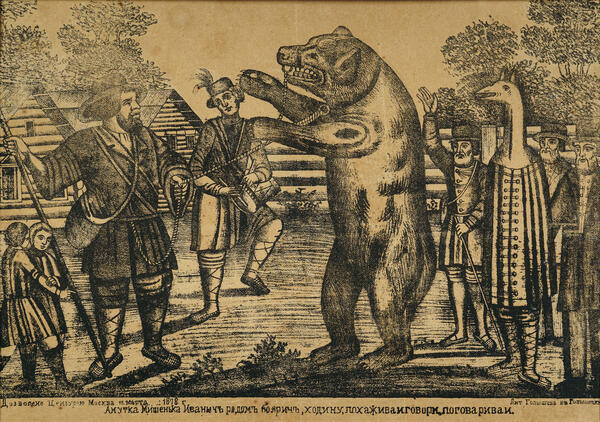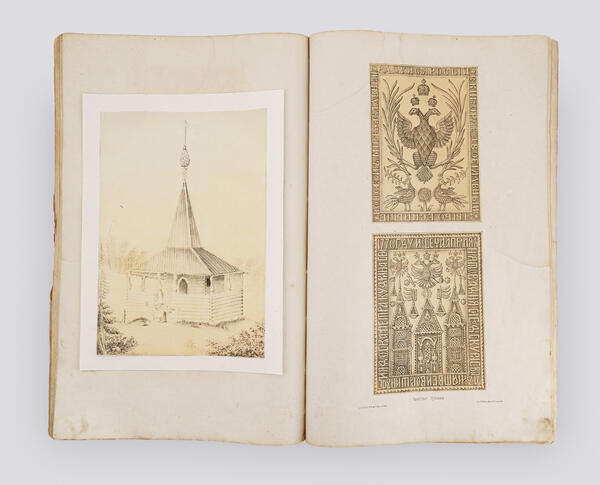The son of a serf, Ivan Alexandrovich Golyshev was born in Mstyora in 1838 and rose to prominence as an outstanding publisher, artist, archaeologist and ethnographer. His father, Alexander Kuzmich, sold lubok literature: he brought black-and-white lubok pictures to Mstyora from Moscow, which were then hand-painted by his daughters.
In 1858, Ivan Golyshev, together with his father, opened the country’s first rural lithography workshop. Using a set of lithographic stones, they printed albums, books, and lubok pictures. The workshop produced up to three thousand lubok pictures per day.
A lubok (or a lubok picture) is a type of graphics, a hand-printed and hand-colored image, characterized by simplicity and accessibility of imagery. Talented folk artists created vivid pictures with simple, often humorous or edifying captions, which brought a lot of joy to unsophisticated customers.
Ivan Alexandrovich viewed lubok pictures not only as entertainment, but also as a means of promoting literacy among the peasants. Lubok was distinguished by a wealth of themes and plots: it included illustrations of folk songs, oral epic poems and fairy tales, images of folk festivals and festivities, portraits of historical characters and contemporary military heroes. They could be purchased in shops, where they were hung on ropes. The images had to be approved by censors before publication.
An important role in the assortment of Golyshev’s workshop was given to religious pictures, which replaced icons for many peasants and townspeople. Morally instructive and educational lubok images were very popular among the peasants. They talked about virtues and family life, condemned drunkenness, gluttony, greed and dissolute life, and praised traditional values.
The multi-figure composition presented at the
exhibition illustrates the plot of a Russian folk parable about a dandizette
and her stupid husband. The wife asked her husband to sell their horse and cow
to buy her new clothes. He agreed. The picture shows the result of their
stupidity: the husband had to harness his wife to the cart. He sits on the
firewood and whips her. On the left, onlookers — three men and a woman —
observe this comical scene.




